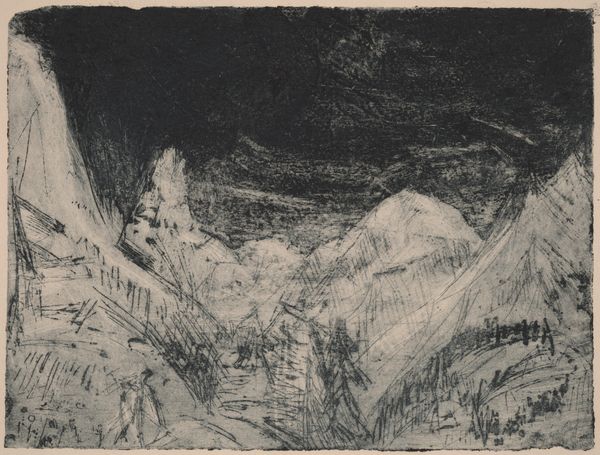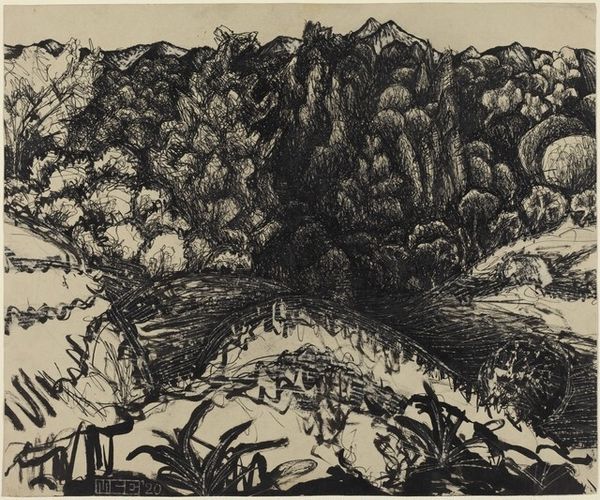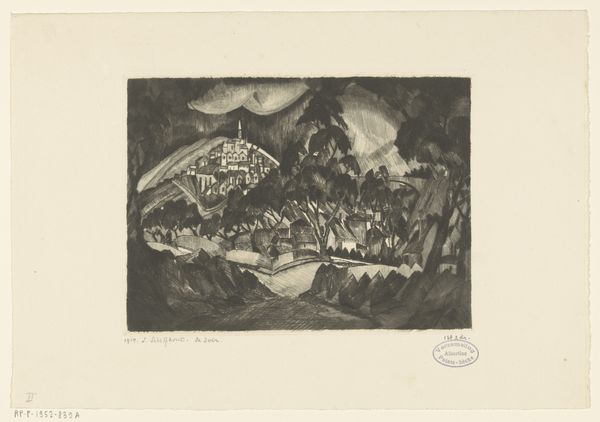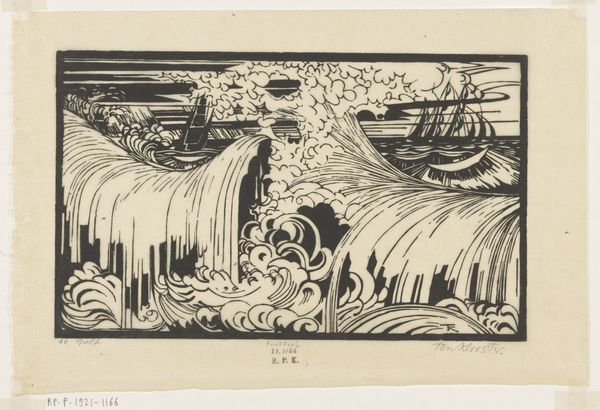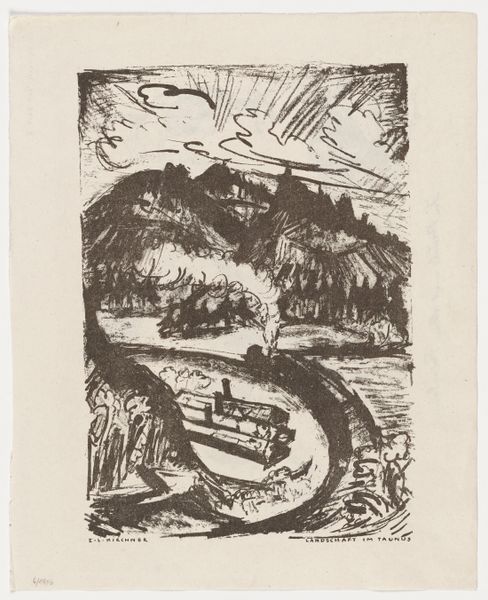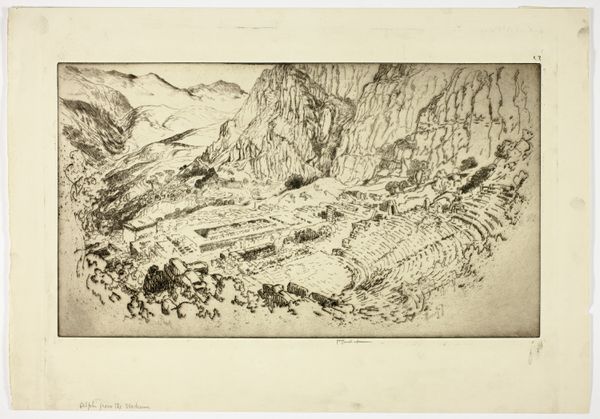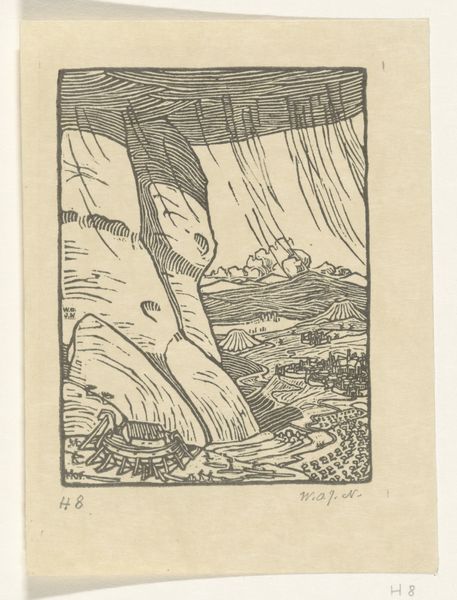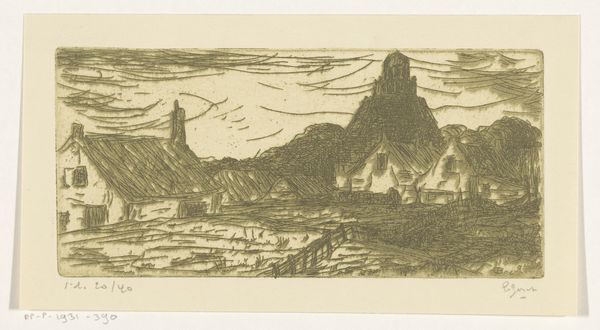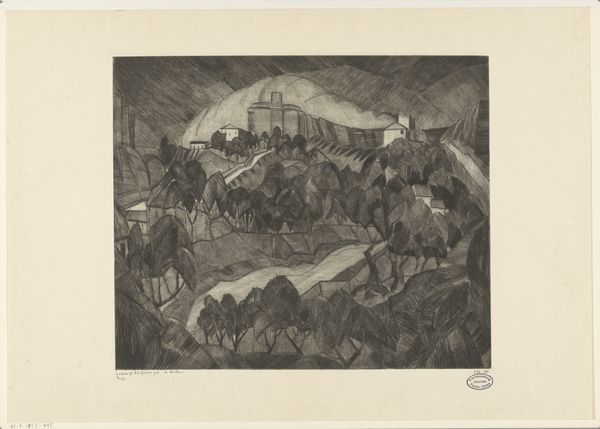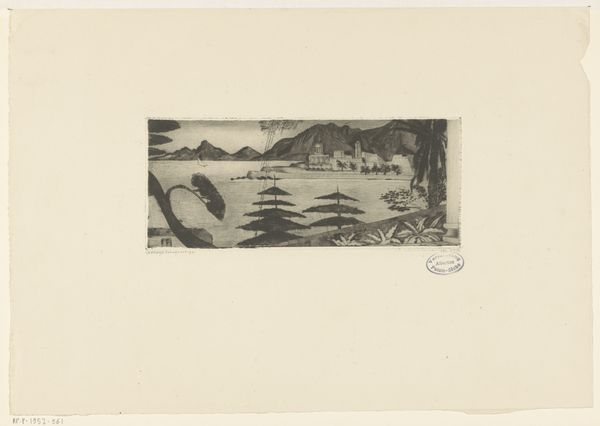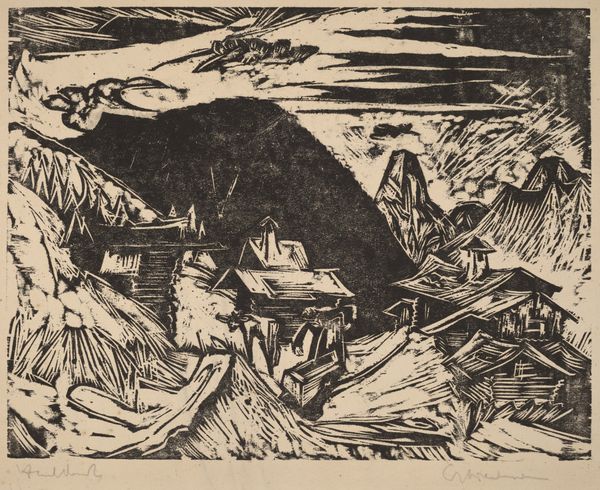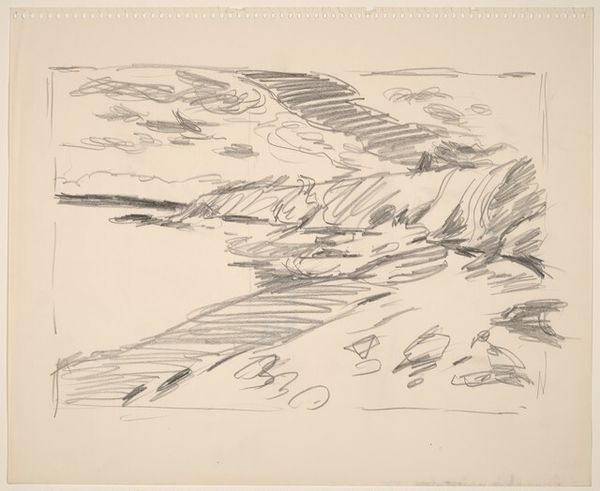
drawing, print, woodcut
#
drawing
# print
#
landscape
#
german-expressionism
#
form
#
geometric
#
expressionism
#
woodcut
#
line
Copyright: Public Domain
Editor: Here we have Ernst Ludwig Kirchner’s "Junkerboden," created in 1919. It’s a woodcut, and looking at this stark landscape, I immediately feel a sense of almost violent isolation. It's all sharp angles and looming mountains. What do you see in this piece, beyond the immediate visual impression? Curator: Violent isolation… I like that. Yes, Kirchner slices and dices that landscape, doesn't he? It feels very… German. Which it is, of course, through and through! Look at how he wrestles form from the wood. Each cut seems imbued with a pent-up energy. Imagine Kirchner hacking away, transforming his anxieties and disillusionment into those rigid peaks and valleys. Do you see how even the moonlight seems menacing, fractured? Editor: It’s like the whole scene is about to shatter. The moon feels like a sliver of glass ready to fall. So, it's about expressing internal emotions through the external world? Curator: Exactly! The Expressionists weren’t interested in pretty pictures, you know. Kirchner experienced trauma during the First World War, and this print, created shortly afterward, reads like a psychological landscape. Think of those sharp, almost aggressive lines as the artist's raw nerve endings exposed to the world. A visual scream. It makes you want to look away, doesn’t it? Yet you can’t. Editor: It really is compelling, though unsettling. The term 'visual scream' fits it perfectly! I hadn’t considered his personal experience so directly influencing the aesthetic. Curator: Art isn’t made in a vacuum, is it? "Junkerboden" serves as a brutal, beautiful reminder. Now, what's your scream? What landscape reflects yours? Editor: That's quite a thought... thanks! I think I will carry that perspective when looking at other pieces now.
Comments
stadelmuseum almost 2 years ago
⋮
Kirchner moved to Frauenkirch near Davos in 1917. The alpine world inspired a series of landscape depictions in which he translated the grandeur of nature into art entirely without romantic pathos. The view of the Junkerboden near the Stafelalp presents a vibrant landscape rhythmized by myriad sheaves of lines. The notation in the lower margin served to ensure the woodcut’s correct reproduction in Gustav Schiefler’s (1857–1935) catalogue raisonné of Kirchner’s printmaking oeuvre.
Join the conversation
Join millions of artists and users on Artera today and experience the ultimate creative platform.
